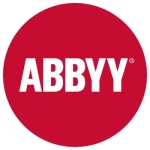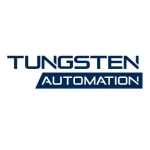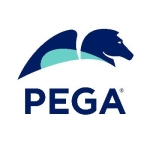What is our primary use case?
Our primary use cases for Automation Anywhere (AA) are billing, email automation, and ticketing.
What is most valuable?
Most of the features of Automation Anywhere (AA) are good, but one big feature which I really like is its OCR (optical character recognition) feature.
Another important feature of this solution is how it handles variables, e.g. my engineers don't need to have complete programming expertise, and they don't need to declare variables and get variables captured on the fly.
I also find the accuracy rate of this solution valuable, and I like that it performs better after implementation. Most of the features of this solution are amazing.
What needs improvement?
Multiple things still need to be improved in Automation Anywhere (AA), and the key thing is its error handling command, though it has come a long way from the previous version. This solution still has a lot to improve on error handling, especially when compared to other platforms that are doing very well.
Another area for improvement is its file handling. Automation Anywhere (AA) now supports automating file-related operations, but that still needs to be improved. We can directly import and do the script, e.g. the script feature is new and is found in the latest version, but still needs a lot of improvement.
An additional feature I'd like to see in this solution is more scripting integration. Integration needs to be fluid, e.g. integration of different items are in the latest version, but it always comes with limitations.
If a more fluid integration can be built into Automation Anywhere (AA), I can go and unpack a project file, open it, then from there, I'll know that we need to extract the data. Currently, the native RPA takes a whole lot of time to open a particular file, then read the data. It's always easier to utilize the data frame, read and slice the data, then take what's next. In that note, we can enable the RPA within itself, e.g. in-house data solution that can be integrated, making it a better solution. There is an integration feature in Automation Anywhere (AA), but it's not that fluid, and it's not easy to integrate. We always have to build something outside and integrate the whole process, and this needs to be improved.
For how long have I used the solution?
I have experience with Automation Anywhere (AA) within the last 12 months, and I've been leading projects in a product manager capacity. I've worked with this solution for three years, using the previous generation and the latest generation, e.g. the 2019 version. I handled the implementation of the previous version and the transition and migration to the 2019 network.
What do I think about the stability of the solution?
Automation Anywhere (AA) has a lot of stability issues. It needs a lot of maintenance. If it runs 24/7 in the server, it's fine, but on the development machines or the VM (virtual machines), it isn't. We really need someone to attend to it, e.g. that person has to monitor the VM, then if an issue starts from the control room, we need to identify what's going on, then we may need to do something to the machine, or to the application. This is a problem in the previous version and the current version, and this solution hangs at times, for no reason at all.
What do I think about the scalability of the solution?
Automation Anywhere (AA) is scalable, but we have not tried to scale it to a larger instance. The implementations we currently have are on-premises, and our costs are limited. We test if this solution works fine for the demos with clients we have worked with, but on the production side, we haven't tried to scale it for more than 20 or 30, and that's the limit we have.
How are customer service and support?
I've contacted and escalated to the technical support team for this solution multiple times. I would rate them 3.5 out of five. They are quick to give support, but it could vary. Their second level technical support are good, but their first level technical support require a lot more insight into the tool and how they're handling issues.
How was the initial setup?
The initial setup for Automation Anywhere (AA) was straightforward, but the current deployments we are working on are a bit complicated because these are switch solutions, and they are not straightforward.
We have multiple systems communicating with each other, e.g. the SaaS systems we need to interface with, then we have other data that we need to introduce to these systems. Because Automation Anywhere (AA) is an on-premises platform, we are looking into whether implementing or deploying it will be safe, but I believe it is safe. In most cases, when it comes to switch solutions where you want to switch your RPA on top of other automation or other technologies, it can be complicated, depending on the technology you're with. It can be complicated when you want to integrate with other systems.
What's my experience with pricing, setup cost, and licensing?
We're paying for a yearly package for Automation Anywhere (AA). It's not a standard license. It's a license package, e.g. it comes with the fee for automation, or the license for the product, and anything beyond that, we pay a base fee, and whether we utilize it or not, it's paid for, and it has to be allocated. That's the current deal we have. What would be better is for them to have different packages for different types of organization.
What other advice do I have?
As Automation Anywhere (AA) is an RPA platform, we have development users and end users, e.g. we have 14 developers who are working on it, and they are direct developers, then we have six citizen developers from the business side, who are certified and are using this product.
Automation Anywhere (AA) always requires maintenance, so we always need maintenance engineers to monitor the application around the clock. Because of cost implications, most clients don't use cloud solution assets, e.g. they use on-premises, which means a lot of maintenance is required.
My advice for people who want to start working with Automation Anywhere (AA) is to get a certification first, and then they also need to determine their purpose, e.g. what kind of case they want to work with. When their certification is ready, they still need to keep learning, especially when they run into issues. They should always get in touch with the forum, or they should get whatever knowledge or information they can take from their certifiers, or whatever organization they got their certification from. There is a learning curve, and it can either be quick to learn, or hard to learn.
I would rate Automation Anywhere (AA) an eight out of ten.
Which deployment model are you using for this solution?
On-premises
Disclosure: My company does not have a business relationship with this vendor other than being a customer.

















